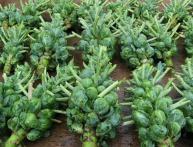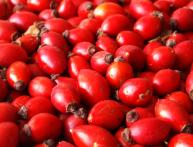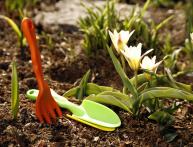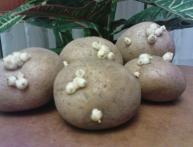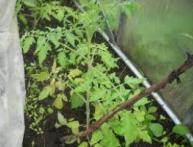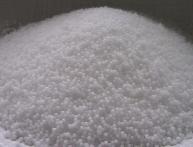Pruning fruit trees: important points and pruning rules

Trimming fruit trees is important, as it can improve the yield, taste and appearance of the fruit. It should be done every year. But all gardeners need to know when to prune so as not to harm the trees.
Content:
Why do you need to prune?
A large number of amateur gardeners think that it is not necessary to prune fruit trees. They mistakenly believe that the crown will develop on its own and the harvest will be excellent. But if pruning is carried out correctly, then the trees will live longer and delight with good fruits. In addition, this procedure increases the yield.
If pruning is done incorrectly, then the fruits may decrease in size. This can lead to fewer fruits each year. Eventually there may come a year when there is no harvest at all. But pruning is necessary. Every person should understand this, and he should familiarize himself with rules this procedure.
It is important to prune both young and old trees. This leads to their rejuvenation and improved fruiting. And some varieties that breeders have developed especially need pruning.
When should you start pruning fruit trees?
There is no specific start or end for this procedure. Experienced gardeners can often cut off branches that are preventing the fruit tree from developing at any time. This stimulates its growth and the appearance of new branches.
There is no guarantee that pruning will increase yield. But it is definitely fashionable to say that the quality of fruit will become much better. This is due to the fact that after pruning, the balance between the rhizome and the crown changes, after which the root system begins to saturate the fruit with nutrients.
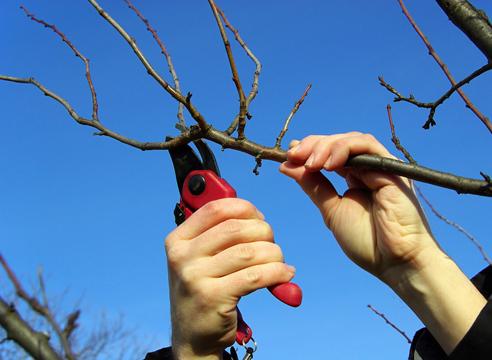
It is best to start forming a tree when the sprouts have appeared. But many people plant ready-made seedlings. In this case, you should prune it after planting. In this method, the balance between the damaged rhizome and the tree returns to normal. The root system needs time to recover, since it will not be able to provide maximum nutrients to the crown, which begins to grow rapidly. But trimming excess branches will facilitate the development of the tree.
Proper pruning
Pruning is also done for health purposes. In this case, remove the branches that were affected by rot and frost. It is also worth eliminating the weak shoots. When diseased branches are removed, healthy wood must also be included. This method stops the spread of the disease.
All branches that have been removed must not be used as compost. They must be burned immediately. But the ash obtained after combustion is an excellent fertilizer. This procedure must be done throughout the entire growing season.
Shortening circumcision is also performed.The purpose of this procedure is to shorten branches that grow excessively, because they interfere with neighboring branches and form a shadow. Each branch should be illuminated by the sun for a couple of hours throughout the day. To achieve this, you need to thin out the wood. This will also affect the better growth of shoots.
Young trees especially need this procedure. After all, they are actively growing. When the tree is already fully formed, then shortening pruning is rarely done.
But the formed crown needs to be thinned out regularly. In this case, the branches that compete with each other, grow downwards, and create a shadow are removed. If thinning is carried out, then the tree will be better ventilated. This will protect him from diseases, since moisture will dry out faster, and moss and scab will not appear on the wood.
Pruning rules
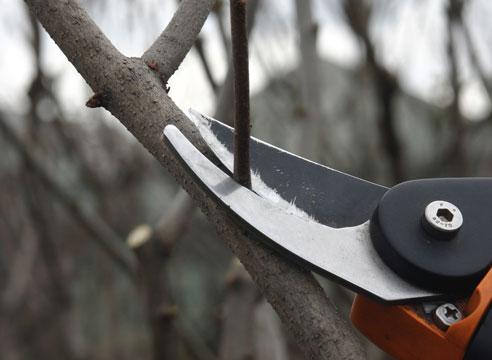
Any pruning should be done during the dormant period. The tree is in this state in winter and early spring. In the autumn, it is just beginning to prepare for sleep, so you should not disturb it. Many experienced gardeners do not recommend pruning in winter, since it is more difficult for cut branches to withstand frost. In addition, it is impossible to say for sure which branches will survive until March. For this reason, it is recommended to prune in early spring.
During this period, the cold weather has already disappeared, but the tree is still in hibernation. But when pruning you should adhere to the following rules:
- When a branch is shortened, it must be cut so that the bud, which is located near the cut, touches the cut site with its end. In this case, the damaged tree will heal faster, and the new branch will slightly change the direction of growth.
- If you cut off a bud at the base, it may dry out.In its place, the lower bud will wake up, and the branch will grow in the opposite direction.
- The places where the cut was made are tedious to process garden varnish.
- When side branches are cut down, you need to leave a couple of millimeters of the tree. Otherwise, the risk of damage to the main trunk increases. This will lead to a shell appearing at the cut site, which can form a hollow. But you shouldn’t leave a stump that’s too big.
- When removing branches with a knife, you must first make a circular cut in the bark. If this is not done, most of the bark can be torn off. This seriously injures the tree.
Don't get too carried away with trimming the tree. If this procedure has not been carried out for several years, then you first need to remove the growing branches in the center and shorten the top. Don't damage the tree too much. It is better to extend the pruning procedure over more than one year. It is best to remove the cut branches away from the tree and burn them. Some people also use them for smoking.
So, many gardeners grow a variety of fruit trees. To reap a good harvest, pruning should be done. This procedure has a positive effect on the entire tree, rejuvenates it, but it must be done correctly. Otherwise, you can only harm the fruit tree. If you stick to simple rules, the yield can be significantly improved.
Video tutorial on pruning fruit trees:




